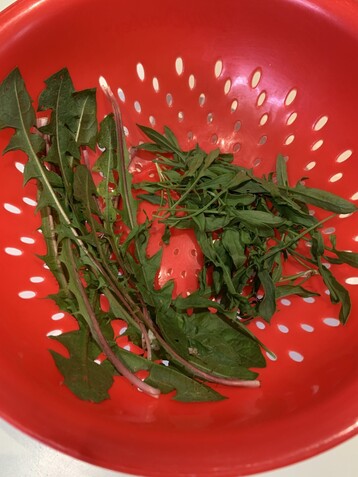Current Nature: Foraging On Nantucket
Seth Engelbourg •
Have you ever picked warm, juicy blueberries from the side of a trail on a Nantucket summer day? If so, congratulations! You are a budding forager.
Foraging is the practice of finding and harvesting materials from nature for use as food, medicine, or craft supplies. Generally, foraging refers to plants and fungi; fishing, hunting, and trapping are related activities but fall into their own categories.
Like many practices, different foraging activities range in intensity from beginner to expert. If you are planning on eating what you harvest, it is essential that you are 100% certain that the species is edible and that you know how to identify it correctly. It is also necessary to display good ethics; always obtain permission, never completely harvest an area, and respect your role in nature.
There is a wide diversity of species to forage on island; many different fruits, flowers, and even mushrooms. Some of the most well-known and sought-after are blueberries, huckleberries, beach plums, rose flowers and hips, and wild grapes. But the possibilities span well beyond that. As an experienced forager, I still learn about new species to harvest each year.
Are you interested in trying it out?
Here are some steps for a successful foraging adventure:

Do your research
The first step for a foraging trip should be researching all the species you plan to gather. You will need to know the habitats they grow in, the months they are active, and how to identify them in the field. Although the internet is a great source of information, I highly recommend using published guides and books as the information in them is more likely to be verified by experts. Especially if you plan to eat your harvest, you should always cross-reference multiple sources as there are sometimes disagreements. Eat the Weeds by Deane Jordan is a great place to start. There are also guides specific to New England, such as Wild Plants I Have Known…And Eaten by Russ Cohen. Or there are topical pieces such as The Wildcrafted Cocktail by Ellen Zachos that have a specific recipe focus, in this case, cocktails. If starting on your own gets overwhelming, try finding an experienced mentor or joining a local foraging club, both excellent options for guidance.
Obtain permission
After conducting your background research, you must obtain permission to forage from the owners of the sites that you plan to visit. This may be obvious if you are hoping to access a private property, but it is equally true for anywhere. The rule of thumb is always to ask for permission. Please do not assume you have permission because it is a public or conservation property. Each environmental organization on the island has different policies and practices regarding foraging, and you need to do your due diligence to identify the property owner and ask them for permission. Not sure who owns a property that you plan to visit? You can always look it up using the Town of Nantucket GIS records. Most of the conservation lands are also marked with boundary posts or kiosks that will help direct you to the appropriate contact information. Never harvest an area without permission; this is bad ethics, and puts the time-honored tradition of foraging on Nantucket at risk.

Plan your harvest
Before heading out in the field, it is very important to plan your harvest. A primary goal of ethical foraging is never to gather more than you need. This drastically reduces any impacts you would have on the environment. If you are gathering materials for a specific recipe, make sure that you know exactly how much you need and try to harvest as close to that amount as possible. Aim to harvest no more than one-tenth to one-third of any specific patch and never collect rare or endangered species. By following these guidelines, you will ensure that the species you are harvesting remains a part of the ecosystem, is able to reproduce, and continues to serve as food for wildlife. When developing your foraging plan, remember to consider the environmental conditions in the areas you plan to harvest; what will the weather be like, what do you need to wear or pack, and will there be hazards such as ticks or poison ivy?
Start your adventure
Now that you are prepared, it is time to head out into nature in search of its bounty! Remember to dress appropriately for the weather and wear sunscreen. It is always a good idea to bring extra water and a first aid kit with you, and if you plan to forage alone, let someone know where you are heading. Once you reach your site and begin harvesting, relax and enjoy! Foraging should not feel like work; yes, you have a set amount that you are trying to gather, but it is a time to explore and appreciate the beauty of nature.

Enjoy your efforts
After gathering what you need, congratulations! It is time to enjoy the fruits of your successful foraging adventure. This may be as simple as chowing down on a basket of berries on the side of the trail, or it may be bringing everything back home as ingredients for a fun recipe. Depending on what you harvest, there may be several ways to preserve your goods for future use; pickling, canning, fermenting, drying, or freezing. These days, the internet is rife with possibilities but have some fun and let your creativity run as wild as your bounty.
If you follow these steps, you will be well on your way to a lifetime of successful foraging adventures. Feel free to experiment in a safe and ethical way. You may be surprised by the places and species you end up encountering!
Stay tuned for more editions of Current Nature, a bi-weekly column featuring seasonal topics, natural history information, and advice on the outdoors from the staff at the Linda Loring Nature Foundation.